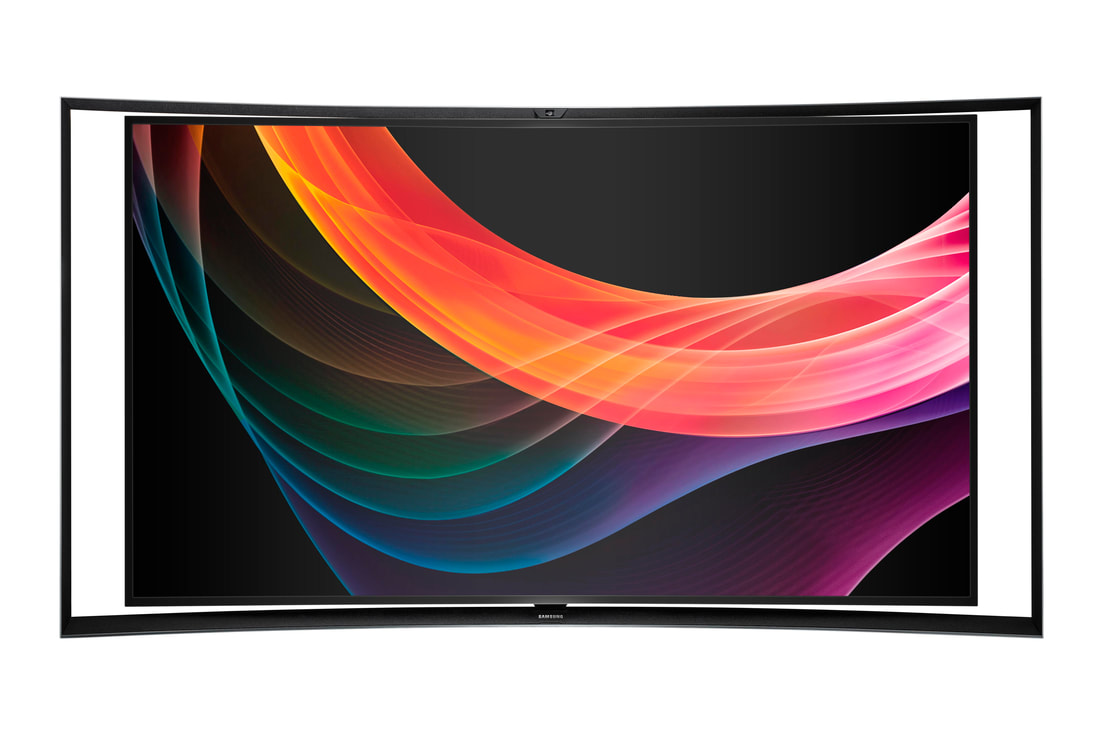|
By Eli Epperson
Edited by Helena Rios In South Korea, a competition for television display dominance is raging. Its competitors, Samsung and LG, lead the world in the production of this pervasive technology field, which, by the year 2022, is expected to be worth close to $170 billion [1]. As mentioned in the prequel of this article, “Part 1: The OLED Explained,” in the market of display technology, the most popular type of television is the familiar LCD or liquid-crystal display. When it comes to LCD manufacturing, Samsung is the clear champion, comprising approximately 21% of the market, while its competitor LG controls only around 12% [2]. However, although the LCD may be the most popular type of television display, there is one emerging technology in particular that touts a number of advantages over it: the organic light-emitting diode display. While LG is lagging behind its rival in terms of LCD production, the company has emerged as the leader in the field of OLED display technology. The tech giant’s success in this field comes by virtue of an unexpectedly effective secret weapon, in the form of a number of electronics-based patents acquired years ago. With the numerous advantages that OLED displays have over LCDs, LG may now be in the position to gain control of the lucrative television market. Despite the relatively recent debut of the OLED television, the technology behind these ultra-thin displays dates back to the late 1980s [3]. Chemists Ching W. Tang and Steven Van Slyke developed OLED technology at the Eastman Kodak company twenty years before the release of the world’s first OLED television in 2007 [4]. In 2003, Kodak developed the technology into one of the earliest consumer products to have an OLED screen: theEasyShare LS633 digital camera, which featured a 2.2 inch OLED display. Also at this time, Kodak had begun to see declines in sales due to consumers’ preference for digital cameras over film ones. This shift in preference represented a kind of bittersweet dilemma for the company, since Kodak not only pioneered the first digital camera but also held a major stake in the success of film cameras, a longtime moneymaker [5]. While the market for OLED televisions was coming into focus, the camera company decided to set its sights elsewhere, given the tremendous investment that developing an OLED television would cost. In 2009, Kodak finally sold off its OLED intellectual property to LG in the form of approximately 2,200 patents and patent applications [6]. Many people thought nothing of this transaction. In fact, LG’s senior director of communications, Ken Hong, admitted that when LG bought the rights to Kodak’s OLED technology, “nobody else thought that was going to be a successful business” [7]. But the deal turned out to be incredibly fruitful for LG. This success did not stop the company from filing a lawsuit against Kodak a few years later, claiming that a number of Kodak’s patents actually belonged to one of LG’s subsidiaries. In the same year that the iconic camera corporation filed for bankruptcy [5], the two companies agreed on a settlement that cost Kodak three of the disputed patents [6]. For LG, the $100 million dollar price tag for Kodak’s patent treasure trove (plus some legal fees) was a small price to pay, considering this deal later drove Samsung to halt production of their own OLED televisions[7] [8]. The reason behind LG’s success lies in its development of Kodak’s white OLED technology, which offers a number of advantages over Samsung’s approach. Samsung’s OLED televisions used to employ a technique called direct emission, in which every pixel featured three subpixels, each emitting a separate primary color - red, green, or blue. The physics behind OLED pixels results in a different brightness associated with each primary color. For example, blue OLEDs pose a particular challenge, as they are not as bright as red or green pixels of the same size. To combat this, Samsung’s televisions featured blue subpixels that were larger than their red and green neighbors, improving the brightness output of the pixel as a whole. This more complicated OLED patterning scheme, among other factors, made Samsung’s direct emission displays more difficult to manufacture than LG’s displays, which used a method called WRGB. Pixels of WRGB displays use a single white OLED together with color filters producing the red, green, and blue subpixels. In addition, a fourth non-filtered subpixel emits white light, making WRGB televisions brighter than their direct emission counterparts [I]. But what was truly pivotal for LG’s success was the fact that displays featuring the WRGB design were half as expensive to manufacture as were Samsung’s direct emission models. Behind by years of research and losing money to their rival, Samsung quietly abandoned OLED televisions in 2014 [8]. While Kodak’s WRGB technology helped establish LG as the leader in OLED televisions, Samsung still enjoys a comfortable lead in LCD production. Sure, displays made with OLEDs beat everything else on the market in terms of key factors like picture quality, owing to their high contrast ratio, but LCDs remain hundreds of dollars cheaper, an appeal that most consumers cannot ignore. For you tech enthusiasts, the only affordable organics need not be the veggies at your local farmer’s markets though. Many smaller devices like smartphones, cameras, and laptops also feature OLED displays. Rest assured, LG will continue to develop groundbreaking OLED research to one day herald a new age of affordable OLED televisions. For the love of contrast, let’s hope that day comes soon. References <http://www.marketsandmarkets.com/PressReleases/display.asp> [1] <https://www.statista.com/statistics/267095/global-market-share-of-lcd-tv-manufacturers/> [2] - <https://www.oled-info.com/oled-pioneers-ching-tang-and-steven-van-slyke-were-inducted-2013-consumer-electronics-hall-fame> [3] <http://www.oled-info.com/sony-xel-1> [4] <http://www.independent.co.uk/news/business/analysis-and-features/the-moment-it-all-went-wrong-for-kodak-6292212.html> [5] <http://www.oled-info.com/global-oled-technology-says-they-prevailed-kodak-lawsuit-assigned-3-more-patents-and-pioneers-oled> [6] <https://www.cnet.com/news/lg-says-white-oled-gives-it-ten-years-on-tv-competition/> [7] <http://blog.gsmarena.com/samsung-stops-making-oled-tvs-due-lgs-dominance/> [8]
0 Comments
Leave a Reply. |
Categories
All
Archives
April 2024
|

